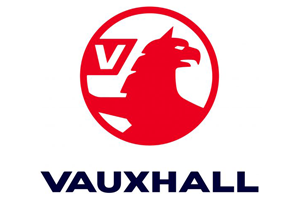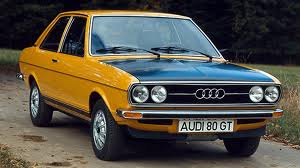


This edition of the Vauxhall-Opel Viva GT 2.0L is the 4 speed / Manual version and was first brought out in 1968. This was at around the same time as the introduction of the 1969 McLaren M6 GT 5.7 V8 and the 1969 Ford Mustang Boss 429.This particular Vauxhall-Opel Viva has a 1975cc Naturally Aspirated Petrol powerplant with 4 cylinders in a St formation.
The Viva shares its Petrol St4 engine configuration with the likes of the 2019 Ariel Atom 4 2.0 Turbo and the 2013 Caterham 7 620 R 2.0 L Supercharged. If you're looking for other fast cars which share the Viva's Rear Wheel Drive, Saloon combination then how about the 1982 Fiat X1/9 1.5 8V or the 1965 Aston-Martin DB6 1965.
Weighing in at 925 kgs (2039 lbs) this makes the Vauxhall-Opel Viva GT 2.0L in the same weight category as the 2020 Lotus Elise Sport 220 1.8 Supercharged or the give or take 50kg.
In terms of power the 1975cc 8V St4 engine produces 104 bhp (77 kW) @ 5600 rpm similar to the 2017 Ford Fiesta 1.5 TDCi ST-Line 120 (118 bhp) or the 2013 Caterham 7 160/165 0.7L Turbo (79 bhp).
The Naturally Aspirated St4 throws out 117 lb-ft (158.6 Nm) @ 3400 rpm placing it with cars of similar torque performance figures such as the 2013 Renault Captur 1.2 Turbo TCe 120 EDC (140 lb-ft) or the 2012 Mini Cooper Paceman (118 lb-ft).
If one combines the weight with power or torque performance for the Vauxhall-Opel Viva you can get a better idea of it's real world performance.
![Mitsubishi Colt CZT 1.5 Turbo - [2005] image Mitsubishi Colt CZT 1.5 Turbo - [2005] image](/editionimages/403.jpg)
The 2005 Mitsubishi Colt CZT 1.5 Turbo (137.3 bhp per ton) has similar Bhp Per Ton stats as the Vauxhall-Opel Viva.
The Vauxhall-Opel Viva has a Power to weight ratio of 112.4 bhp per ton and 126.4 lb-ft per ton. Bhp Per Ton figures of the 1968 Viva competing with the 2005 Mitsubishi Colt CZT 1.5 Turbo (137.3 bhp per ton) or the 2002 Seat Leon Sport FR 1.8 20VT 180 (137.3 bhp per ton).
If you agree with the late great Carroll Shelby then arguably an even better indicator of potential performance, Torque. Use weight as well and you end up with - Torque per ton, with the Vauxhall-Opel Viva generating around 126.4 lb-ft per ton. If you're curious as to what other cars have as much torque to weight then look no further than the 2002 Alfa-Romeo 156 GTA 3.2 V6 Sportwagon (151.3 lb-ft per ton) or the 2008 Seat Leon Linea R 2.0 TSI FR DSG (151.2 lb-ft per ton).
With a 0-60mph time of 10.70 secs or a 0-100km/h (0-62mph) of 11.1 secs, this made the Vauxhall-Opel Viva GT 2.0L as fast as the 2002 Ford KA Street KA (10.80 secs) the 1984 Talbot Samba Rallye 1.2 (10.80 secs) the 1963 Ford Falcon 1st Gen Sports Hardtop 260 V8 4-Speed (10.80 secs) the or the 1947 Ferrari 125 S 1.5L V12 (10.80 secs). This Vauxhall-Opel Viva GT 2.0L is also faster than the 2002 Ford KA Street KA (10.80 secs) the 1984 Talbot Samba Rallye 1.2 (10.80 secs) the 1963 Ford Falcon 1st Gen Sports Hardtop 260 V8 4-Speed (10.80 secs) the and the 1947 Ferrari 125 S 1.5L V12 (10.80 secs).
When talking about the performance of the Vauxhall-Opel Viva on the drag strip it can reach a quarter mile in an estimated 17.1 secs @ 80.0 mph. Similar performance down the quarter mile can be found with the the 2007 Volvo S40 T5 2.5 Turbo AWD (17.03 secs), the 2006 Chevrolet Cobalt SS 2.0 Supercharged (17.04 secs), and the 1978 Maserati Merak SS 3.0 V6 (17.04 secs).
Modern performance cars are often artificially restricted to 155mph. The 1968 version of the Vauxhall-Opel Viva GT 2.0L has a maximum speed of 101mph.
If maxing out your car on the AutoBahn is your thing and you're wondering what's faster than the 1968 Vauxhall-Opel Viva GT 2.0L then how about the 2021 Ford Mustang Mach-E AWD (112 mph), the 2012 Fiat 500 L TwinAir Turbo (112 mph), or the 2011 Dacia Sandero 1.6 16v (112 mph).










Maserati Merak SS 3.0 V6
Engine: Naturally Aspirated Petrol | 2965cc 12v V6
Top Speed: 155 mph
0-60mph: 7.20 seconds

Fiat Strada Abarth 130 TC
Engine: Naturally Aspirated Petrol | 1995cc 8v St4
Top Speed: 0.0 kph
0-100kph: 8.2 seconds



















